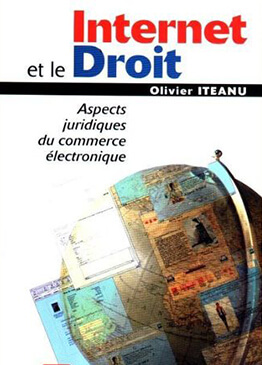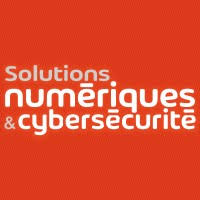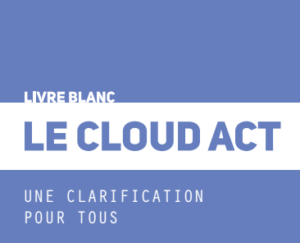Internet and the Law

Eyrolles Editions – April 1996
The first French book ever published on this subject (out of stock).
Table of contents
INTRODUCTION
PRELIMINARY CHAPTER : WHAT IS THE ELECTRONIC COMMERCE?
Section 1: Types of commercial contracts
I . Contract entered in the context of traditional trade
- Contracts negotiated at a distance and mail order
III. The teleshopping contract
- Doorstep selling and phone marketing
Section 2 : Contract entered in the context of electronic commerce
I . The offer is expressed through an international telecommunications network
II . The offer is expressed in an audiovisual manner
III . Interactivity between professional and customer
CHAPTER 1: A WORLDWIDE TRADE IN ITS ESSENCE
Section 1: A globalized electronic economy
I . The phenomenon of trade globalization emphasized by the network
II . Both an asset and a difficulty
Section 2: How and in which cases the conflict of laws issue arises?
- The question of the choice of applicable law is not relevant in all cases
A . Exclusion of criminal and administrative law
B . The specific case of the mandatory private laws and the foreign elements condition
- The texts to be used for answering the conflict of laws issue
- The Rome Convention of 19 June 1980 on the law applicable to the contractual obligations
B . The Hague Convention of 15 June 1955 on the Law Applicable to International Sales of Goods
Section 3: Solutions to the conflict of laws
I . The principle of party’s autonomy of choice
II . The consumer exception
III. The specific case of copyright and neighboring rights
Section 4: Conflicts of jurisdiction
CHAPTER 2: ELECTRONIC COMMERCE AND EVIDENCE
Section 1: Identification of the parties
I . Why is it necessary to identify oneself and to identify others?
A . Contract law requires identification
- Law requires identification
- Excluding certain categories of persons from sensitive services
II . How are assigned the name and electronic address in the Internet context
III. Legal regime of cryptology
- Cryptology as a means of identification
- Definition and regime
Section 2: An evidence difficult to produce
- The state of the law of evidence in France
II .The legal regime of the electronic signature
III. EDI and law of evidence: the right process… for tomorrow
- The workaround solution to the problem of evidence.
CHAPTER 3 : THE FORMATION OF THE ELECTRONIC CONTRACT
Section 1: The electronic offer
I .Requirement for a clear and specific offer in practice
A . What is an offer
B . Compliance with the sale by mail regulations
II . Characteristics of the electronic offer
- The offer is expressed in an audiovisual manner
- Can the consumer require French language?
- Does the offer on network have a validity period?
III. Is the electronic offer an advertising?
Section 2: The acceptance
- A manifestation of will poorly regulated
- Does “clicking” mean accepting?
III. Workaround solutions
- The exchange or reimbursement right to the rescue of the consumer
CHAPTER 4 : THE SCOPE OF ELECTRONIC COMMERCE
Section 1: What can be or cannot be offered on the network
- In principle any goods or services
- General exceptions to the freedom principle
III . Special schemes depending on the product or service offered
A . Medical and paramedical products and services
B . Financial and insurance products
C . Firearms
D . Tobacco and alcohol
E . Distance learning
F . Food products
G . Telephone services
- Is it efficient to impose particular constraints to the scope of the network trade?
Section 2: The specific case of copyright
I- Digitizing an existing work – the appropriate approach
A . Identify is the item to be digitized is protected by copyright or not
1 . The creative activity condition
2 . The conscience of a result
3 . The tangibilization of the work
4 . The perceptibility for the senses
B . If it is protected by copyright, is it, or not in the public domain?
1 . There is no single window
2 . Identify the author
3 . Beware of the works which are “free of rights”
C . Obtain the assignment of copyright
II- The price to pay for digitizing
A . The principle of proportional remuneration is not adapted to the network economy
B . Using a flat fee price model
III- Control of the dissemination of the work in the network
A . The problem
B . The choice of a workaround: the experience of the Multimedia Online creation festival of CICV
CHAPTER 5: A SECURED PERFORMANCE AND PAYMENT
Section 1: The performance of the contract
I . The Specific issue of the delivery period
II . The delivery and performance details
A . Characteristics of the product or service delivered
B . Delivery or performance on the network or outside the network
III . What taxation for the e-business?
Section 2: Secure remote payment
I . One-time payment rather than pay-per-time
II . Credit card payment
III . The financial intermediation
A . The Globe ID example
B . The Digicash example
C . The First Virtual example
D .The Cybercash example
CHAPTER 6 : LEGAL REGIME AND RESPONSIBILITY
Section 1: The legal regime of telematics services
- The French telematics experience
A . – Audiovisual communications and press law regime
B . – The French telematic kiosk
C . – Information ordinary law
II . What legal regime for the new networks?
Section 2: The specific case of the Internet service providers
Section 3: Which regulator?
Section 4: Contractual liability
1 . The Peaceful possession guarantee
2 . The hidden defects guarantee
CONCLUSION
See also
Iteanu Avocats

75008 PARIS











